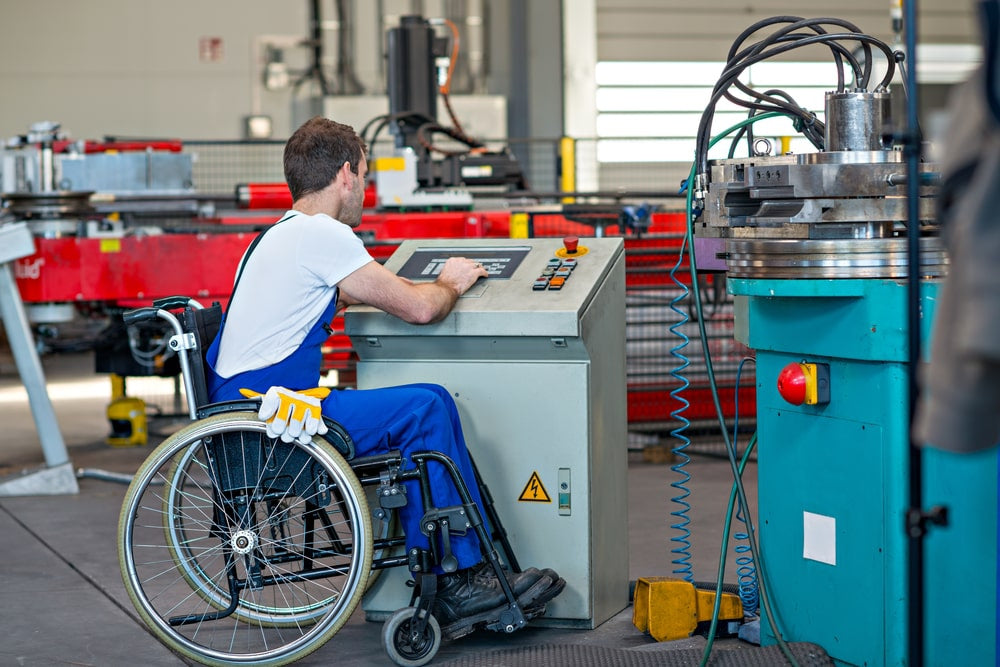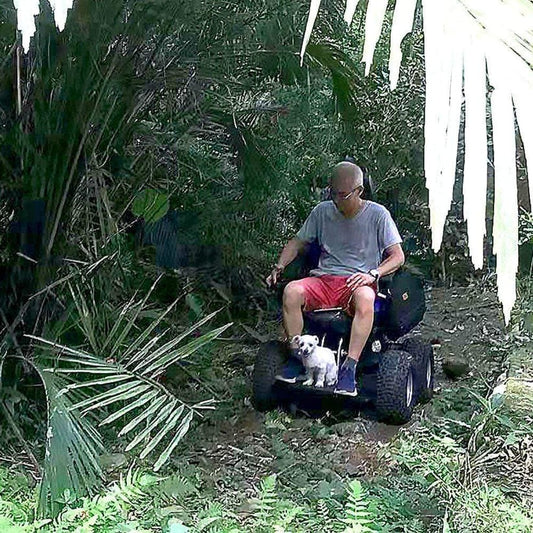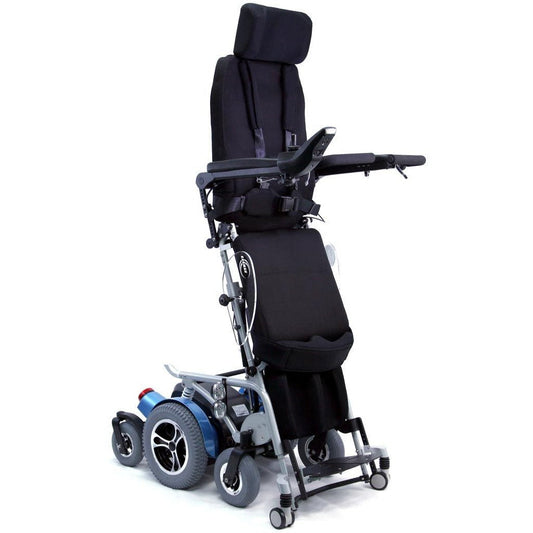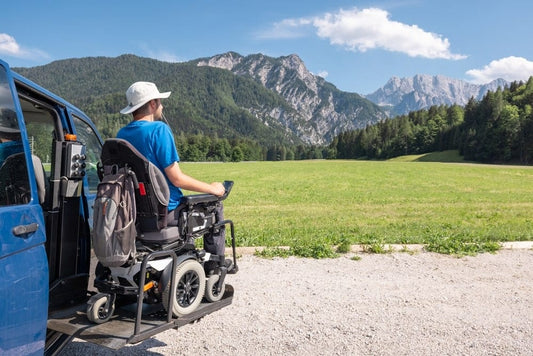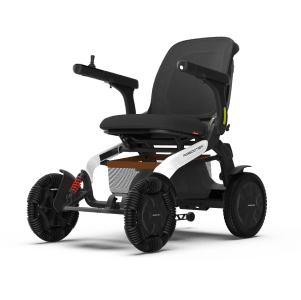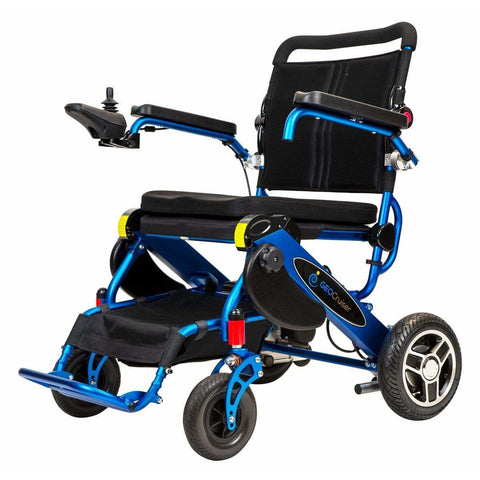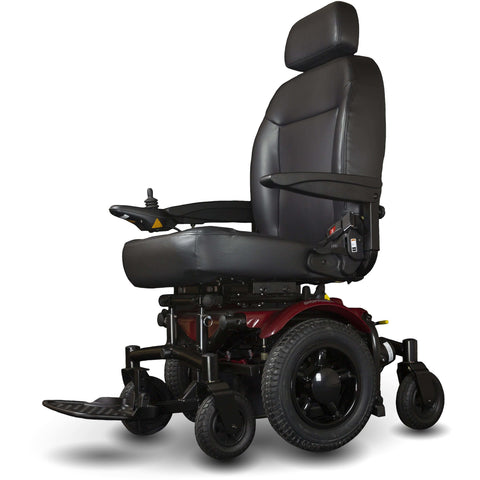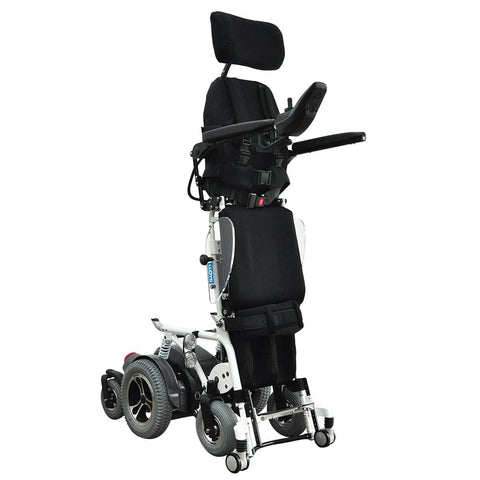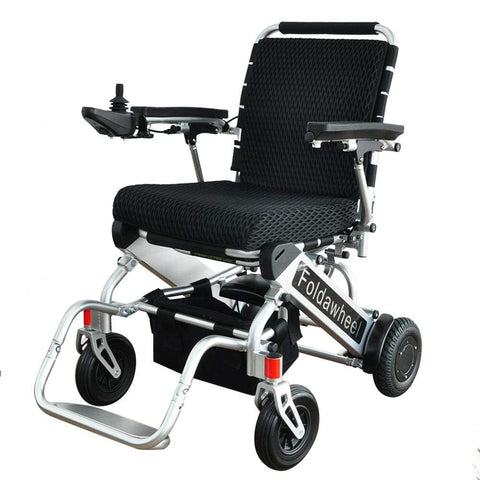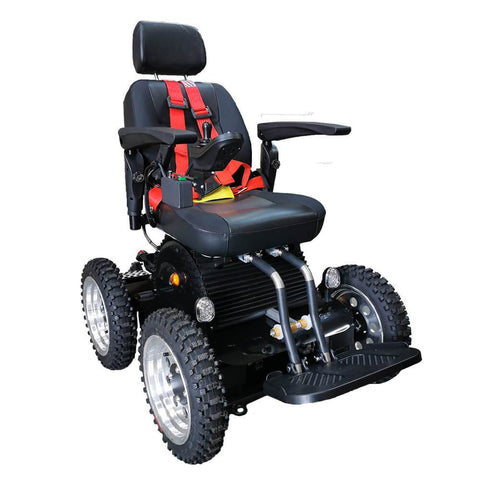For many years, the largest advancements in electric wheelchairs were seen in propulsion technology. Motors that were responsible for driving the wheelchair became more powerful. Then as power needs increased, dual motors were introduced. As advancements in motor technology were made, the demand for stronger, longer lasting batteries became evident. Over time, batteries became more powerful, smaller, and quicker to recharge.
Today, power wheelchair technology is much more than just motor power and longer lasting batteries. Computer chips and sensors have been incorporated into chairs to provide smarter functions and allow a more comfortable user experience. Nearly all power wheelchairs have a joystick or controller that allows the user to operate the chair. With modern technology, controller units often include small display screens to provide vital diagnostic information and many include touchscreens for additional control options.
Technology changes are typically the result of what a user requires in their power wheelchair. For example, the seats and backs of standing wheelchairs are motorized to allow the user to get into an upright position and take advantage of the health benefits the sensation of standing brings. Wheelchair88's PW-4x4Q All-Terrain power wheelchair incorporates a gyro system to automatically adjust the angle of the seat to keep the user upright as they travel up or down stairs or on unstable or uneven terrain.
WHILL's Model Ci incorporates even more modern technology by embedding a 3G modem and Bluetooth to connect it to smartphone apps. WHILL has received heaps of praise for their iPhone app as it allows the Model Ci to be driven by the app or remotely by a care taker through the app. Through the 3G modem, real-time diagnostics and maintenance information can be sent to WHILL's IntelliCare customer & technical support service to produce alerts, notifications, and communications to a live support agent. It also incorporates GPS for location tracking. This allows the user to never be left stranded because of technical issues. Further, this high-tech personal electric vehicle has a built-in USB port to charge your mobile devices and has an optional Smart Key that can lock the unit to ensure it can't be operated by unwanted guests.

WHILL has been recognized over and over again for its innovations. Its latest advancements include outfitting the Model Ci with stereo camera sensors and a customer interface tablet to create an autonomous mobility service. This MaaS (Mobility as a Service) business offering provides last-mile transportation for users in settings such as airports, hospitals, museums, malls, or convention centers. The advanced sensors, equipped with collision avoidance technology, create an autopilot experience that gets users to select destinations quickly, efficiently, and safely, eliminating the need for push service. As users get to their desired destination, the autonomous model will automatically drive itself back to a designated location to continue its service.
With autonomous vehicles becoming more common and the breakthroughs we're seeing in artificial intelligence and healthcare technology, one can only imagine what the future might behold. We are not far from having powered wheelchairs connect with its users in more ways than George Klein ever imagined possible. A world where devices, both medical and personal, connect with the chair to provide the best user experience. Automatically drive to a location input into your smartphone or a screen on the unit. Monitor vital health information, alert medical staff or caregivers, and provide crucial notifications. Communicate with friends and loved ones through video chat. The opportunities are endless and the future is looking very smart.

